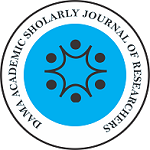Authors: Sutik Meru1, R. Azizah2
1,2Department of Enviromental Health, Faculty of Public Health, Airlangga University, Indonesia.
Email: sutik1971@gmail.com (corresponding author), azizah@fkm.unair.ac.id
Abstract
In general, surface water is not clear enough because it contains dirt or fine particles derived from various sources such as household waste and industrial waste. One step in the processing of river water into drinking water is by eliminating the turbidity of river water. Turbidity of water can be removed by adding a chemical material called coagulant. Coagulant serves to bind the particles or impurities contained in the water into clumps that have a larger size so that more quickly settles. One type of coagulant commonly used is aluminum sulfate or often called alum. The purpose of this study is to measure the initial turbidity to the end and analyze the alum affix effectively reduce the level of surface water turbidity in Ijobalit Village. The type of research used was comparative research (comparison). The design of this research used the design of quasi experiments or time series design. Sampling method used in this research was grab sampling method. Sampling was conducted October 2010 at Location Tour Valley Green Ijobalit Village and location of Parameter Inspection at Water Quality Inspection laboratory (PKA) of Health Office of East Lombok District. The result showed that the average turbidity level was 6 days (33.33 NTU) and the turbidity level had exceeded the Standard of Clean Water Quality, Mean baseline 6 days of turbidity with 10 ml of alum variation in 1000 ml of sample water (25.50 NTU), giving 20 ml of alum variations in 1000 ml of sample water (17.83 NTU), and giving 30 ml of alum variations in 1000 ml of sample water (11.50 NTU) has exceeded the quality standard, it can be concluded that there is influence affixing alum variations on surface water in Ijobalit Village.
Keywords: Turbidity, Surface water, Aluminum sulfate

